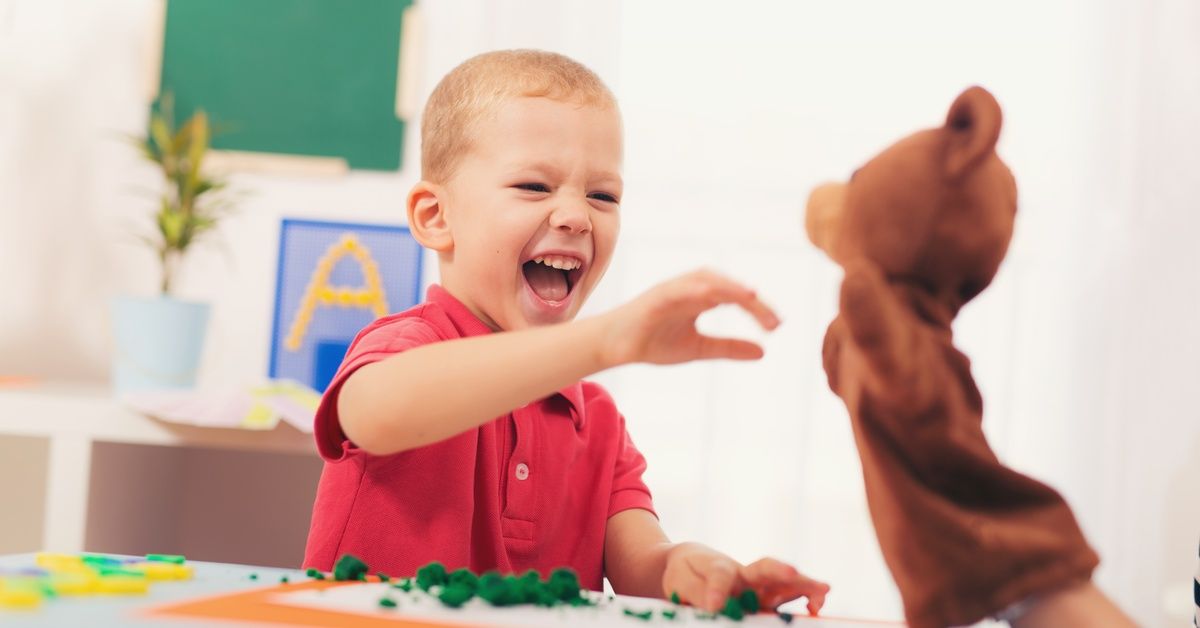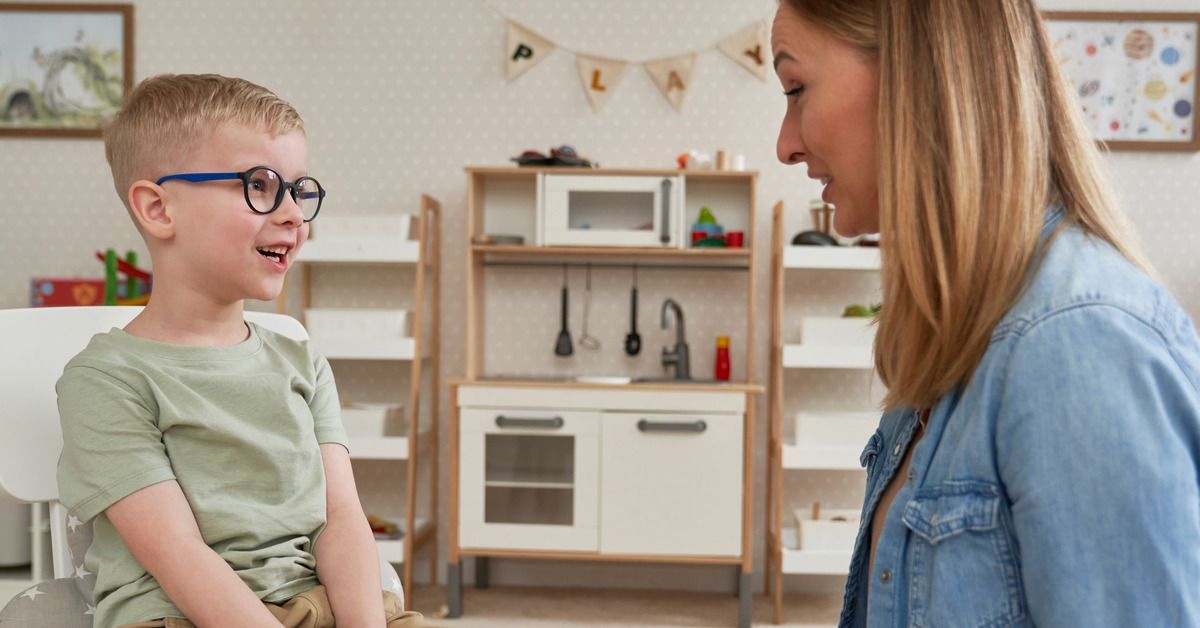14 Benefits of Sign Language for Nonverbal Children
Communication is fundamental for connecting with others and expressing thoughts and emotions. However, conveying ideas and needs can be a big challenge for nonverbal children as they navigate a world heavily relying on spoken language.
By learning and using sign language, nonverbal children can better communicate their needs, emotions, and ideas. With support, love, and encouragement, this development can lead to improved social interactions and foster greater independence and confidence. Let’s explore how sign language can transform the lives of nonverbal children.
Enhancing Communication Skills
Sign language opens up a new world of communication for nonverbal children. It allows them to express their needs, desires, and feelings effectively. By using signs, they can convey complex concepts that would otherwise be difficult to articulate. This ability empowers them to communicate with family, friends, and caregivers, fostering deeper connections and reducing frustration.
Supporting Cognitive Development
Learning sign language has significant cognitive benefits. It engages multiple areas of the brain, enhancing memory, attention, and problem-solving skills. Nonverbal children who use sign language often exhibit improved cognitive abilities, positively impacting their overall development. The visual and kinesthetic nature of signing stimulates brain activity, promoting neural connections and boosting cognitive growth.

Promoting Social Interaction
Sign language facilitates social interaction among nonverbal children. By learning this form of communication, they can participate in conversations, share experiences, and engage with their peers. Having a means of communication can also help them develop friendships and build social connections, fostering a sense of belonging and inclusion.
Reducing Behavioral Challenges
Nonverbal children often experience frustration and behavioral challenges due to their inability to communicate with spoken words. Sign language provides them with an alternative mode of expression, reducing their frustration levels and minimizing behavioral outbursts. By offering a way to convey their thoughts and emotions, sign language can lessen the frequency of meltdowns, tantrums, and other challenging behaviors.
Enhancing Emotional Expression
Sign language enables nonverbal children to express their emotions more accurately. They can communicate feelings such as happiness, sadness, anger, and excitement through signs. This opportunity to communicate helps them better understand and manage their feelings, improving emotional regulation and well-being. It also allows parents and caregivers to respond appropriately to their emotional needs.
Supporting Language Development
Contrary to popular belief, sign language does not hinder spoken language development. In fact, it can enhance it. Nonverbal children who use sign language often develop speech earlier and exhibit stronger language skills. Signing helps them understand the concept of communication and builds a foundation for verbal language. It can also support their written language learning by reinforcing vocabulary and grammar.
Building Independence
Sign language empowers nonverbal children to become more independent. They can communicate their needs and preferences, making choices and decisions for themselves. This independence fosters a sense of autonomy and self-confidence. Nonverbal children who use sign language are likelier to engage in daily activities, participate in routines, and assert their preferences.
Strengthening Parent-Child Bond
The parent-child bond is crucial for a child’s development. Sign language provides a unique opportunity for parents and nonverbal children to connect and communicate. By learning and using signs together, parents can better understand their child’s needs and build a stronger emotional connection. This shared experience enhances the parent-child relationship and creates a supportive and nurturing environment.
Improving Academic Performance
Sign language can positively impact academic performance. Signing supports literacy skills by reinforcing vocabulary, phonics, and comprehension. It also enhances focus and attention, making it easier for nonverbal children to engage in classroom activities and follow instructions.
Fostering Inclusion in Society
Sign language promotes inclusivity by breaking down communication barriers. Nonverbal children who use sign language can participate more fully in community activities, social events, and educational settings. This fosters a sense of belonging and ensures they are not left out due to their communication challenges. Sign language creates a more inclusive society where everyone has a voice.

Enhancing Family Dynamics
Sign language can have a positive impact on family dynamics. It facilitates better communication and understanding among family members. Siblings, grandparents, and extended family can learn sign language to interact more effectively with the nonverbal child. This effort strengthens family bonds and creates a supportive network for the child’s growth and development.
Professional Training and Resources
As with family, educators, therapists, and caregivers can benefit from professional training in sign language to better support nonverbal children. By acquiring these skills, professionals can offer a more inclusive and responsive environment that caters to these children’s unique communication needs. Investing in this training gives adults working with nonverbal children the tools to facilitate effective communication and support their development.
Encouraging Creativity and Self-Expression
Sign language offers a unique way for nonverbal children to express their creativity. They can use signs to tell stories, act out scenarios, and engage in imaginative play. This encourages self-expression and nurtures their creative abilities.
Innovative Approaches to Learning Signed Languages
Learning sign language doesn’t have to be difficult! From online courses and videos to interactive apps and games, nonverbal children can access various resources to learn sign language. These tools make it easier for them (and your family) to acquire signing skills and enhance their communication abilities.
Providing Lifelong Communication Skills
The benefits of sign language for nonverbal children extend beyond childhood. Nonverbal children who learn sign language acquire a lifelong skill that can serve them in various situations. Whether in personal relationships, educational settings, or future employment, sign language remains a valuable tool for communication. It equips them to connect with others and advocate for themselves.
Promoting Cultural Awareness
Sign language is a rich and diverse form of communication with its own culture and history. Learning sign language exposes nonverbal children to this unique culture, promoting cultural awareness and sensitivity. It broadens their understanding of different ways of communication and fosters respect for diversity. Sign language connects them to a global community of individuals who use and appreciate this beautiful language.
Sign language holds incredible potential for nonverbal children, offering them a powerful means of communication, cognitive development, and social interaction. By introducing sign language, we can provide nonverbal children with the tools they need to express themselves, connect with others, and thrive in various aspects of life.
Encourage your nonverbal child to explore sign language and witness the transformation. For additional support and personalized guidance, consider enrolling in center-based ABA therapy, where sign language can be integrated into their learning and development. Contact our team at HANDS Center today for more information.







